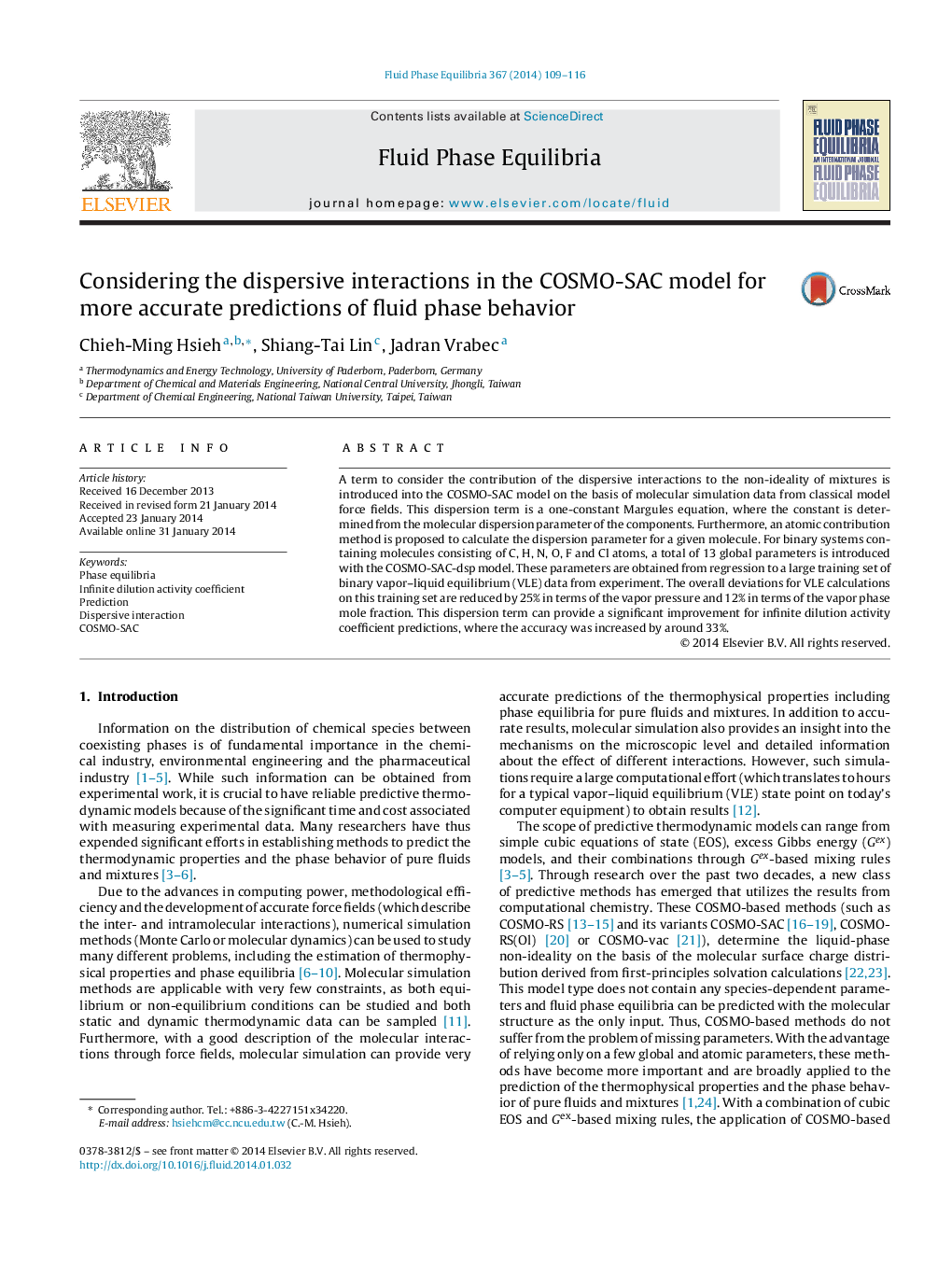| Article ID | Journal | Published Year | Pages | File Type |
|---|---|---|---|---|
| 200958 | Fluid Phase Equilibria | 2014 | 8 Pages |
•A dispersion contribution to the activity coefficient calculation is introduced into the COSMO-SAC model.•This contribution is based on molecular simulation data for classical model force fields.•All parameters in the proposed term are adjustment to VLE data and the overall deviations are reduced by 25% in terms of the vapor pressure and 12% in terms of the vapor phase mole fraction.•The accuracy of infinite dilution activity coefficient predictions is improved significantly; the overall deviation is reduced by about 33%.
A term to consider the contribution of the dispersive interactions to the non-ideality of mixtures is introduced into the COSMO-SAC model on the basis of molecular simulation data from classical model force fields. This dispersion term is a one-constant Margules equation, where the constant is determined from the molecular dispersion parameter of the components. Furthermore, an atomic contribution method is proposed to calculate the dispersion parameter for a given molecule. For binary systems containing molecules consisting of C, H, N, O, F and Cl atoms, a total of 13 global parameters is introduced with the COSMO-SAC-dsp model. These parameters are obtained from regression to a large training set of binary vapor–liquid equilibrium (VLE) data from experiment. The overall deviations for VLE calculations on this training set are reduced by 25% in terms of the vapor pressure and 12% in terms of the vapor phase mole fraction. This dispersion term can provide a significant improvement for infinite dilution activity coefficient predictions, where the accuracy was increased by around 33%.
